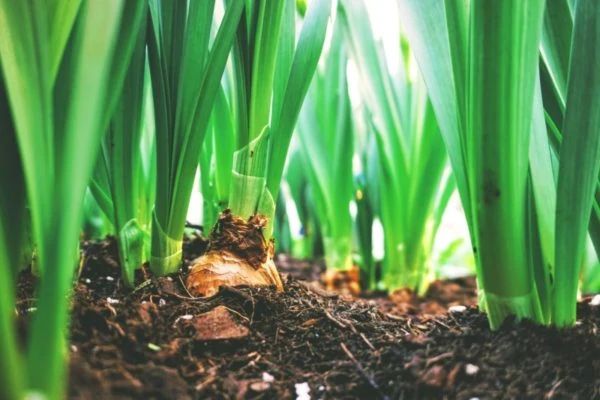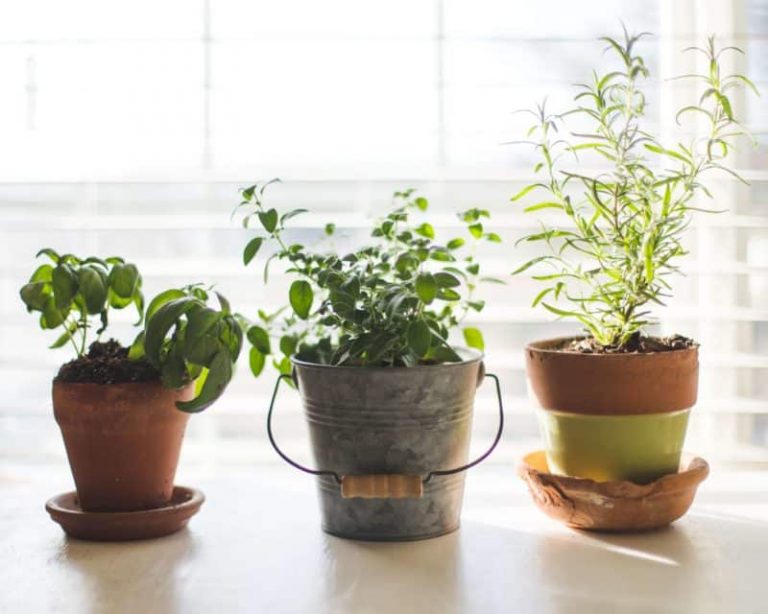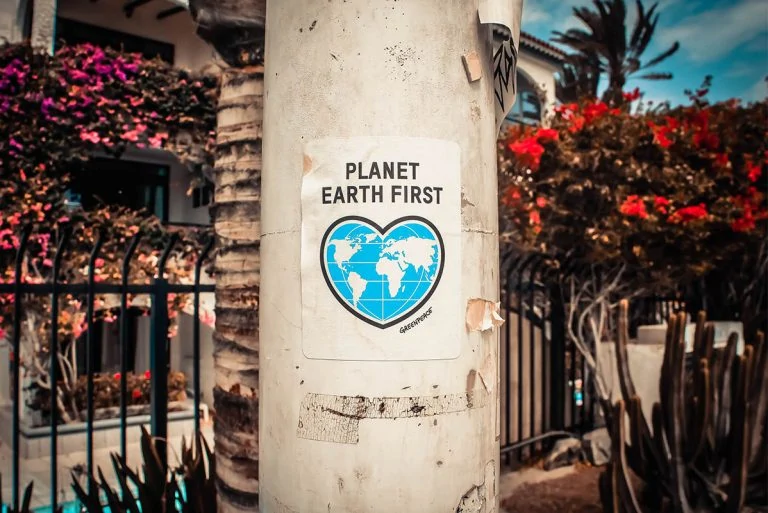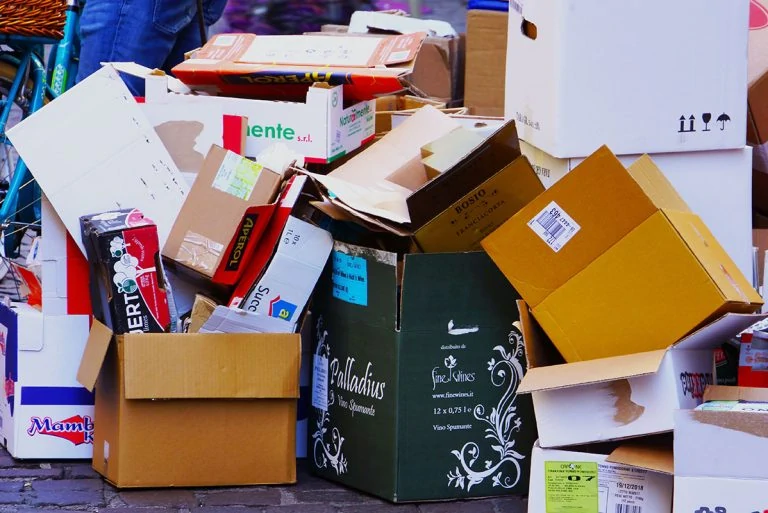Sustainability is more than an academic concept. It’s a real way of being productive and making a profit without a detrimental impact on natural resources and the environment.
This considered approach to harnessing resources maintains them so they can be harnessed over the long term. Sustainability has the potential to transform society with a new generation of high-longevity enterprises that are self-sustaining.
This article explains sustainability and shares 20 real-world examples of thriving businesses and projects that embrace sustainability.
What is sustainability?
Sustainability is the ability for an activity or process to be supplied and supported continuously over an indefinite period or at least a long time. Sustainable commercial or industrial activities minimize their environmental impact and consumption of natural resources.
In recent times, sustainability has come to the fore as governments, think tanks, and other stakeholders look for solutions to problems like environmental degradation and the depletion of natural resources. Sustainable business practices could lead to meaningful change and improvements regarding biodiversity loss and pollution while providing economic stimulus through innovative new sectors.

We categorize sustainability as economic, environmental, or social. Environmental sustainability is focused on resource conservation, while social sustainability involves diversity, inclusion, and equity to ensure that enterprises or projects can maximize their engagement. Ideally, environmentally and socially sustainable projects will be economically sustainable, providing long-term economic growth on a local or national scale.
20 examples of sustainability from around the world
The best way to understand sustainability is to see it in action in real-world scenarios. These 20 examples come from around the world, with businesses and organizations of all sizes finding ingenious ways to be productive in a sustainable way. Take a look at these remarkable examples of sustainability:
1. Mobius Farms’ Black Soldier Fly larvae farming in Australia
Mobius Farms in Barossa Valley, South Australia, is an excellent example of sustainable and innovative agriculture, turning food waste into a protein-rich animal feed with commercial value.
This farm breeds the black solider fly, a common fly species known for its fat and protein-rich larvae used to supplement feed for chicken and other livestock and pets.
Mobius Farns collects large volumes of food waste from hospitality businesses, breweries, and caterers. Voracious black soldier fly larvae feed on this waste and produce nutrient-rich manure that farms and community gardens can use.
These little critters are so efficient that one kilo of harvest-ready black soldier fly larvae can consume more than 4 kilos of food waste. The process is entirely sustainable and requires minimal water and land. The farm sells live, dead, and dehydrated larvae to farms and the public.
2. Sambhav’s reclamation of degraded land in India
The work of Sabarmatee and her father, Radhamohan, in Odisha State, India, is an amazing example of how degraded land can be reclaimed to become fruitful and productive long-term.
In 1988 the father-daughter duo purchased an acre of degraded land. This was done as an experiment to see if the land could be transformed into a forest using simple organic techniques. When they began their project, organic farming was not widespread in India, so they has to acquire knowledge and expertise as they went along.
Their efforts in transforming the land into a fertile, naturally irrigated food forest were successful, and the land reclamation has grown to a humbling 90 acres and initiatives to provide local communities with food and occupation.
Sabarmatee continues her father’s work under an NGO called Sambhav, teaching organic cultivation techniques, cataloging heirloom seeds, and furthering Indian ecological conservation.
3. The Zero-Budget Natural Farming (ZBNF) movement in India
The ZNBF movement is another Indian initiative creating a new, sustainable, and inclusive way of participating in agriculture. ZBNF involves farming a variety of livestock and crops without using synthetic fertilizers, pesticides, or other agricultural materials. The cost of raising crops is kept as close to zero as possible so that the farmer can generate a profit.
With ZBNF, farms rely on locally available natural resources that can be gathered and used for free. This farming system uses special techniques based on ancient knowledge to minimize the need for irrigation and develop nourishing fertile soils.
ZBNF has been championed by Indian Prime Minister Shri Narendra Modi, who believes that Indian agriculturalists and farmers need to relearn ancient farming techniques and sharpen and scale them for modern use. He has championed ZBNF as part of India’s ParamparagatKrishiVikas Yojana (PKVY) scheme.
4. Sustainable tourism in Yakutia, Russian Federation
The Sakha Republic (Yakutia) is Russia’slargest territory and home to a wide range of North Asian indigenous peoples who live near the arctic circle. Yakutia has some outstanding natural beauty, with almost 40% of the territory protected in a variety of nature reserves, more than double the UN’s global target of 17%.
Yakutia is harnessing the wealth of its natural beauty and extreme environments to introduce sustainable tourism to the region. Interest in this remote and unusual part of the Earth has been piqued by the success of online content that has documented the lives and culture of the various indigenous peoples of the Sakha Republic, including the popular Kiun B channel on Youtube, which boasts several million followers.
The plans for sustainable tourism in the region involve providing tourists with an immersive experience of the Yakut way of life and traditions at temperatures as low as -90 degrees Fahrenheit (-68 degrees Celsius). Participatory activities and tours are to be offered to nature enthusiasts and explorers, and participants are invited to get involved in the efforts to protect the vast Siberian wilderness for a premium price of $25,000 per person.
5. Sea salt production on the Isle of Wight, U.K
Commercial salt production is a high-energy process that involves salt mining and the forced evaporation of brine under a vacuum (PDV) to produce the typical granular table salt you find in the grocery store.
But sea salt is a far less energy-intensive and more sustainable type of salt, increasing in popularity worldwide. Many countries have a tradition of producing sea salt naturally evaporated by sun and wind in salt pans near coastal waters. Sea salt production has a carbon footprint of a quarter of rock salt and is almost 31 times smaller than PDV salt.
On the Isle of Wight in the United Kingdom, Simon Davis of Wight Salt is reviving traditional sea salt making sampling clean coastal waters and evaporating them slowly to create a mineral-rich and delicious sea salt.
Davis produces his sea salt naturally and sustainably by evaporating the salt in salt basins to produce coarse and crumbly crystals that foodies love.
6. Banana leaf tableware, Tamil Nadu, India
With US states like California, Connecticut, Hawaii, Maine, and New York combatting out-of-control plastic pollution by banning single-use plastics, food vendors and caterers are searching for a suitable biodegradable alternative.

Banana Leaf Preservation Technology is an Indian company that has developed a chemical-free, proprietary method of preserving Banana leaves, which usually start to rot after approximately three days. This remarkable process is being used to produce eco-friendly disposable tableware, a multi-billion dollar global industry heavily dominated by plastics. This 100% sustainable material is chemical and water-resistant and suitable for use in the microwave or freezer.
Banana leaf preservation was developed by Tamil Nadu resident, inventor, and eco-activist Tenith Adithyaa. He worked on his process from a young age, experimenting in a homemade lab. His business provides his banana leaf preservation technology to Indian businesses.
7. The Farmer’s Market Coalition, California, USA
The National Farmers Market Coalition is a nonprofit organization that supports the development and growth of farmer’s markets as community assets that safeguard income for growers and other producers by selling directly to the public.
Farmer’s markets are known for their sustainability. The food sold is locally produced, often using less intensive, organic methods. Across the U.S., customers are flocking to local farmer’s markets to access fresh, healthy food that has been produced with environmental responsibility.
The National Farmers Market Coalition ensures that farmers can earn a good living without becoming dependent on contracts with grocery stores, where they struggle to compete with the huge corporate farms that can produce large volumes of food.
By selling via farmer’s markets, smaller farmers can profit from using sustainable farming practices to produce food that does not require high-energy transit to the consumer.
The local communities that are served by the market access healthy food at competitive prices as the farmer does not have the expense of storing or packaging it for a prolonged period before the sale.
Farmer’s markets also drastically reduce the amount of waste generated by food retail. The markets also provide a great educational opportunity, where customers can learn more about the food they eat and sustainable farming practices.
8. Fairphone, The Netherlands
Mobile phones are a massive contributor to electronic waste, with over 150 million smartphones hitting landfills each year. This is one of the worse ways to dispose of electronics, especially as they can leach toxic compounds that cause land and water pollution.
Throwing old or broken smartphones away also leads to the loss of precious metals and rare earth minerals that have to be continually mined, creating environmental damage.
Dutch mobile phone company Fairphone has sought to address these issues by designing a smartphone that is more sustainable and has a much lower environmental footprint than the mainstream models. The company, founded in 2013, has been producing a unique modular smartphone that has components that can be easily removed and replaced by the consumer.

Source: Fairphone (@fairphone)
By making smartphones that can be repaired and customized by the consumer, the Fairphone prolongs its service life. Damage to a single part of the phone can be easily repaired without discarding the whole phone. Fairphone can reduce the CO₂ emissions associated with its phones by 30% just by increasing the lifespan of its phones by two years.
In addition, Fairphone has established fair trade relationships with miners who mine the minerals and metals used in their electronics, ensuring they are paid a living wage. Customers find it easy to recycle their phones with Fairphone, where all components will be put to good use.
9. The Zero Waste International Alliance (ZWIA), San Diego, California
The Zero Waste movement, led by the Zero Waste International Alliance, based in San Diego, California, has been successful in engaging the public in actionable and impactful consumer choices that can tangibly drive down the massive amounts of waste generated by product packaging.
The movement started in the early 2000s and developed from the Grassroots Recycling Network (GRRN) in California and a passionate desire to reduce the amount of waste that was simply being incinerated worldwide. Zero Waste focuses on five areas of action to drive down waste:
- Refusal of packaging
- Reduction in consumerism
- Reuse of items to maximize their lifespan
- Recycling of discarded products
- Rotting of organic matter into compost
Founders and trustees in the ZWIA include academics and industry experts on waste management and recycling. ZWIA is currently active in many countries around the world. Other champions and advocates include Bea Johnson of Zero Waste Home, who famously reduced her family’s annual trash volume to a single jar.
In many places, the public face of this sustainability movement is Zero Waste stores. These stores shun the use of product packaging and instead encourage customers to bring and fill their containers from a bulk supply of the product they want. Many Zero Waste stores offer a comprehensive range of items that are sold by weight or volume.
10. Recycled race car tires, Tokyo, Japan
Yokohama Tires is one of the world’s leading tire manufacturers. This Tokyo-based conglomerate is renowned for the quality of its racing tires which are used in championship races in Japan. Yokohama has begun to develop performance tires using recycled tires to improve its sustainability profile.

Source: Yokohama Tire (@yokohamatire)
Yokohama has been working on recycled rubber tires for many years. The company has developed a novel tire using a combination of scrap tires, rice husk silica, and natural oils. They have found that the performance of their racing tires has not been negatively impacted by these materials.
The new tires are due to make their debut in the 2023 Super Formula racing season. If successful, Yokohama has the goal of supplying tires with a minimum of 35% recycled material content.
Yokohama Tire’s sustainability drive is continuing with ongoing projects to develop a synthetic rubber material from biomass. They are also researching a recyclable thermo-reversible rubber.
11. CARIB Brewery bottle recycling, The Caribbean
Bottle recycling used to be routine across the Caribbean, with youngsters earning a few cents for every soda bottle they returned to the store. For many Caribbean people, hunting glass bottles for cash was a fun part of growing up; however, the practice has fallen off in recent years, and glass waste on the islands has increased.
This is a massive problem for CARIB Brewery, the Caribbean’s leading beverage producer, which relies on glass bottles being returned to keep its business financially viable. CARIB produces almost one million bottles of beer daily with exports across the disparate Caribbean islands, complete with logistical challenges.
As the only glass bottle producer in the English-speaking Caribbean, CARIB relies on bottles that are returned in a reusable state (up to 90%) with a proportion that will be crushed and recycled. CARIB is so desperate for returned bottles that it currently offers 30 cents per glass bottle returned and over $2 for its valuable plastic crates.
CARIB commercial director Miguel Marquez insists that the return of bottles is also essential to prevent the island of the Caribbean from being marred by waste, which also impacts tourism in the region. The company has launched a campaign in grocery stores to encourage the return of the bottles.
12. Biodiesel production from waste cooking oil, Vernon, California
Baker Commodities, a California company, has made a commodity of waste cooking oils and fasts, which it converts into high-quality biodiesel. This sustainable business has a dedicated biodiesel processing plant that produces diesel and processes rendered fats for international export.
The company has a fleet of waste fat collection vehicles which collect fats from food processors, hospitality, restaurant, food service businesses, and even the military. By collecting waste oil for biodiesel production, it does not have to be disposed of by businesses and organizations, potentially clogging drains.

Baker Commodities takes the collected yellow grease from vegetable oils, tallow, and lard and cleans and filters them. The resultant fats are refined using a transesterification process that converts the fats to high-grade biodiesel.
The company sells its New Leaf Biofuel to Southern California residents. It can be safely used in diesel vehicles. They also offer a version that is blended with petrodiesel for use in haulage fleets and other commercial vehicles.
13. Coppiced woodlands at Fooder Farm, New Zealand
Coppicing is a once-common way of managing woodlands for a sustainable wood supply. Rather than cutting down an entire tree for lumber. Young trees would be cut back to a stump or the trunk and then allowed to regrow, with periodic wood harvesting from the new growth only.
Communities relied on coppiced wood for manufacturing everyday materials like tools, utensils, charcoal, and firewood. Following the acceleration of industrialization after the world wars, the practice became less widespread, with a greater reliance on fast-growing coniferous trees for wood supply.
In New Zealand, homesteaders David and Rebecca Stuart at Fodder Farm are reviving this sustainable form of forestry. The harvested wood is in demand for various woodland crafts, including activities like green woodworking and roundwood building. The staggered harvesting of timber from the dedicated woodlot ensures the trees stay alive and minimizes disease risk.
14. Recycled textiles by Vivify Textiles, Adelaide, Australia
Textile waste is a significant waste management issue. Ninety-two million tons of clothing hits the landfill each year, the equivalent of a full dumpster truck every second. To tackle this problem, Australian company Vivify Fabrics has taken discarded textiles and transformed them into luxury fabrics used in the world’s leading fashion centers.
This unique, sustainable textile company manufactures high-quality fabrics from recycled fibers harvested from discarded clothing and textiles. This makes the business extremely sustainable as these premium fabrics are reintroduced to the luxury market.

Source: Vivify Textiles
The textile waste is shredded and unraveled into its fibers. Natural textile fibers in the textile waste are sorted by material and color to reduce the need for dying. The fibers can then be cleaned and re-spun for weaving into new fabrics or compressed into filler material for mattresses and upholstery.
Vivify Textiles has won several international awards, including the Second Hightex award from Munich Fabric Start in 2018. The Australian Government has also approved and promoted the company as a promoted export partner.
15. Co Cars Car Hire Exeter, United Kingdom
Exeter is a historic U.K. city known for its ancient cathedral, leading university, and fantastic green spaces. The long-term plan for the city involves developing a sustainable transport system that provides residents with easy access to a variety of shared transport options that reduces the need for individual car ownership and the consequent pollution.
Car hire and car clubs provide a sustainable solution for personal transport in a compact city. Exeter’s Co Cars offers residents access to a fleet of electric and hybrid vehicles and electric bikes at convenient locations across the city. Residents can register with the company and hire a vehicle whenever they want for as little as $7 per day. Members are billed per hour and benefit from access to well-maintained personal transport for as long or as little as they require.
16. Repair Cafes in the Hudson Valley and Catskills, New York
Repair Cafes are community events where people gather to learn how to repair and restore a wide range of broken and neglected items. The Repair Cafe initiative started in the Netherlands and has spread worldwide.
By repairing items rather than discarding them, Repair Cafes not only prevent landfill waste but also reduce the expenditure of resources and energy to produce new items. People become empowered to complete simple repairs themselves, saving time and money.
Repair Cafes at Hudson Valley and Catskills offer repair coaches who can help people fix:
- Clothing
- Mechanical items
- Ornaments
- Wooden items
- Small appliances
- Tools
The team can fix most items they encounter, and even when they fail, people learn that repairing items is a valid option when their fail. The cafes have been running since 2013 when volunteer organizer John Wackman brought them into the area.

17. Sustainable seafood, Alaska
Alaska is world famous for its rich stocks of quality seafood and rich fishing heritage. It is also leading the way in the adoption of sustainable fishing practices. Their holistic approach harnesses science to carefully monitor fish stocks so that the marine ecosystems of Alaska can thrive and stay productive for the fishermen.
Where fishing is undertaken sustainably, it provides an extremely environmentally efficient. Alaskan fishing is carefully regulated to ensure that fishermen maintain environmentally responsible practices. Unlike other U.S. states, sustainable fishing is written into the Alaskan state constitution.
The success of sustainable fishing relies on protecting the marine environment and the people who live and work in these fisheries. Local knowledge and expertise are highly valued as it has been handed down through generations. This, coupled with a science-based precautionary approach, means Alaskan fleets respond sensitively to ecosystem changes.
Plus, when catches are landed, the Alaskan authorities ensure that 100% of the fish is utilized to minimize any waste of this valuable natural resource.
18. Sustainable pencil production in Tokyo, Japan
Kitaboshi is one of Japan’s leading pencil companies and has produced traditional wooden pencils for over a century. In Japan, the company leads its industry in using innovative sustainable practices to minimize waste from its manufacturing processes and derive the maximum utility from the wood used.
The Sugatani family, who own the company, sources the wood for the pencils from abundant basswood species that they manage sustainably. The company is widely known for almost entirely recycling the waste wood and sawdust from pencil manufacturing.
Kitaboshi’s main circular economy product is a special sawdust modeling clay called Mokunen-san which dries to a hardwood finish and can be cut, drilled, varnished, and even composted. The company also produces unusual paint from wood waste, producing a uniquely textured paint finish that can be sanded or carved.
The Kitaboshi factory is open to tourists and educational visits where they demonstrate their manufacturing and wood waste recycling techniques.
19. Mellowcabs, Stellenbosch, Western Cape, South Africa
Mellowcabs, founded by Neil du Preez, is a South African company that makes and operates a network of lightweight electrical vehicles in urban centers nationwide. These simple, affordable vehicles provide a cost-effective taxi service that offers safe, emission-free transport for its users.
Commuters book their cabs online, via an app, or by phone and can travel within a three-mile radius of the company’s operating area. This micro transport project has been so successful that Mellowcabs is expanding its operation to include a novel van design for courier and last-mile delivery services.
20. E-Waste Jewelry from Paris, France
The jewelry sector is in the midst of a revolution, realizing that up to 7% of the world’s gold is languishing in disused and discarded electronic devices. Smart and savvy independent jewelers have realized that mining more gold is pointless when there is so much to be reclaimed from electronic waste.

Source: COURBET (@courbetofficial)
French high-end jeweler Courbet uses precious metals extracted from e-waste alongside its signature lab-grown diamonds. This ecological and creative jewelry features the same fine craftsmanship and quality that the French are renowned for.
In conclusion
As you can see, sustainability is a viable and actionable way of living and working. When done well, new industries and markets are created using our existing resources rather than looking for more.
Companies and organizations that have successfully implemented sustainable practices are engaging the public, demonstrating what can be done to manage resources better and protect our environment.














